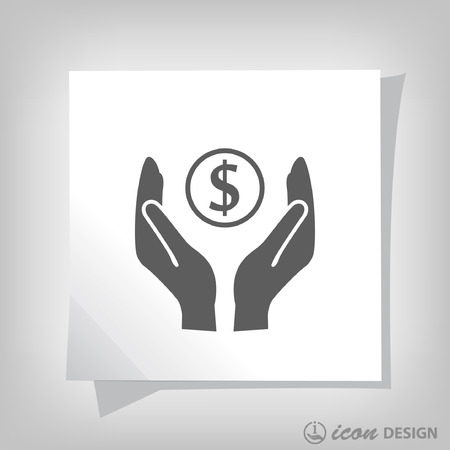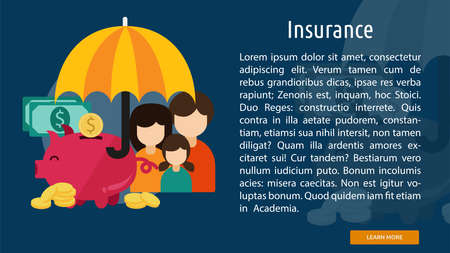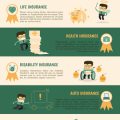Understanding Disability Insurance
When you’re self-employed or working in the gig economy, protecting your income is essential—especially if an unexpected illness or injury keeps you from working. That’s where disability insurance comes in. In simple terms, disability insurance is a type of coverage that replaces a portion of your income if you become unable to work due to a covered medical condition. Unlike health insurance, which covers your medical bills, disability insurance is designed to help pay your everyday expenses—like rent, groceries, and utilities—while you recover. For freelancers, contractors, and gig workers across the U.S., having this financial safety net is especially important because there’s no employer-provided coverage or paid sick leave to fall back on. Understanding how disability insurance works—and why it matters—can make all the difference for your family’s financial security if the unexpected happens.
2. Why Self-Employed and Gig Workers Need Disability Insurance
If you’re self-employed, a freelancer, or part of the gig economy, protecting your income is more important than ever. Unlike traditional employees, you don’t have access to employer-backed disability coverage, which puts your financial well-being at greater risk if you become unable to work due to illness or injury.
Unique Risks for Independent Workers
Freelancers and gig workers face unique challenges compared to those in traditional jobs. Here’s a quick look at how these risks stack up:
| Type of Worker | Main Source of Income | Employer Disability Coverage? | Main Risks Without Coverage |
|---|---|---|---|
| Freelancer/Independent Contractor | Project-based work | No | Loss of income, no paid sick leave, gaps in savings |
| Gig Worker (rideshare, delivery, etc.) | Platform-based jobs | No | No safety net if injured on or off the job, inconsistent earnings |
| Traditional Employee | Salaried position | Yes (in many cases) | Partial income replacement through employer policy |
The Reality: No Backup Plan from Employers
Unlike traditional employees who may receive disability insurance as part of their benefits package, self-employed individuals must secure this protection themselves. If you rely on your ability to work to pay bills and support your family, an unexpected illness or injury could quickly drain your savings and disrupt your household finances.
Potential Consequences Without Disability Insurance:
- No steady paycheck during recovery periods
- Difficulty covering rent or mortgage payments
- Piling up of medical and personal expenses
- Impact on long-term financial goals like retirement or college savings for kids
A Family-Focused Perspective
If you’re supporting loved ones—whether it’s children, a partner, or aging parents—the importance of disability insurance is even greater. Having coverage can provide peace of mind that your family’s needs will be met even if you’re unable to work temporarily. In the unpredictable world of freelancing and gig work, planning ahead with disability insurance is one of the smartest steps you can take for your household’s security.

3. Types of Disability Insurance Available
If you’re self-employed or working in the gig economy, understanding your disability insurance options is key to safeguarding your income. There are two main types of disability insurance: short-term and long-term. Each serves a different purpose, and knowing the difference can help you make informed decisions for your financial security.
Short-Term Disability Insurance
Short-term disability (STD) insurance is designed to replace a portion of your income if you’re unable to work due to illness or injury for a brief period, usually up to six months. For freelancers and gig workers, STD policies can be purchased individually from private insurers since employer-sponsored coverage isn’t typically available. This type of policy is helpful for covering immediate expenses like rent, groceries, and bills if you’re temporarily sidelined by a medical condition.
Long-Term Disability Insurance
Long-term disability (LTD) insurance kicks in after your short-term benefits end and can provide income replacement for several years—or even until retirement—if you suffer a more serious or lasting disability. Independent workers should look for individual LTD policies tailored to self-employed needs, as these often offer customizable benefit periods, waiting periods, and coverage amounts. LTD insurance offers peace of mind by ensuring that a major health event doesn’t derail your family’s long-term financial stability.
Options Accessible to Independent Workers
Unlike traditional employees, self-employed and gig economy workers must proactively seek out disability insurance. Here are some options:
Individual Policies
You can purchase both short-term and long-term disability insurance directly from private insurers. Compare providers to find plans with flexible terms that fit irregular incomes.
Professional Associations
Certain trade groups or professional organizations offer group rates on disability insurance to their members—often at lower costs than purchasing alone.
State Programs
A few states (like California, New York, New Jersey, Hawaii, and Rhode Island) offer state-sponsored short-term disability programs that independent contractors may be eligible to enroll in.
Choosing What’s Right for Your Family
Deciding between short-term and long-term coverage—or a combination of both—depends on your personal savings, monthly expenses, and how much risk you’re willing to take. Carefully review the details of any policy before enrolling to ensure it meets your unique needs as an independent worker and provides reliable support for your loved ones if the unexpected happens.
4. How to Shop for Disability Insurance
If you’re self-employed or working in the gig economy, shopping for disability insurance can seem overwhelming—but it doesn’t have to be. Here’s a step-by-step guide to help you find, compare, and choose the right policy for your needs and budget in the U.S. market.
Understand Your Coverage Needs
Start by considering how much income you need to replace if you become unable to work due to illness or injury. Think about your monthly expenses—like mortgage or rent, utilities, groceries, health insurance premiums, and childcare. This will help you determine the benefit amount and length of coverage that make sense for your situation.
Key Features to Compare
When reviewing disability insurance policies, pay close attention to these features:
| Feature | Why It Matters |
|---|---|
| Elimination Period | The waiting period before benefits begin; shorter periods mean quicker payouts but higher premiums. |
| Benefit Period | How long you’ll receive payments; longer periods provide more security but cost more. |
| Definition of Disability | “Own occupation” vs. “any occupation”—choose what best fits your profession and risk tolerance. |
| Non-Cancelable & Guaranteed Renewable | Ensures your policy can’t be canceled or premiums raised as long as you pay on time. |
| Optional Riders | Add-ons like cost-of-living adjustments or partial disability benefits may offer valuable extra protection. |
Compare Quotes from Multiple Providers
Rates and coverage options can vary widely between insurers. Use online comparison tools or consult an independent insurance agent who understands the unique needs of freelancers and small business owners. Don’t forget to check insurer ratings with agencies like A.M. Best or Standard & Poor’s for financial stability and claims reputation.
Tip: Consider Association Plans
Certain professional organizations offer group disability policies at competitive rates. If you’re part of a trade association, alumni group, or freelancer network, ask about member benefits—you might save money without sacrificing important coverage.
Balance Cost with Coverage
Your goal is to find a policy that protects your family’s lifestyle without straining your finances. Look for opportunities to adjust the elimination period or benefit amount to keep premiums affordable. Remember: Some coverage is better than none, especially if you’re supporting dependents.
5. Costs, Coverage, and Common Pitfalls
Understanding the financial side of disability insurance is crucial, especially for self-employed individuals and gig economy workers who are balancing budgets and managing unpredictable income streams. Here’s what you need to know about premiums, coverage options, and potential missteps to avoid.
Premiums: What to Expect
Premiums for disability insurance can vary widely based on your age, occupation, health status, and the type of coverage you choose. As a self-employed person, expect your monthly payments to be higher than those for employees with group plans. Generally, premiums can range from 1% to 3% of your annual income. While it might seem tempting to opt for the lowest-cost policy, make sure it offers enough protection for your needs.
Coverage Limits and Waiting Periods
Disability insurance policies typically have maximum benefit amounts—sometimes capped at a percentage of your reported earnings (often 60-70%). Be sure to review these limits closely so you’re not underinsured. Another important factor is the waiting period (also called the elimination period), which is the length of time you must wait after becoming disabled before benefits begin. Waiting periods commonly range from 30 to 180 days. Choosing a longer waiting period can lower your premium but requires you to have more savings set aside.
Exclusions: What Isn’t Covered?
Most policies exclude disabilities resulting from pre-existing conditions, self-inflicted injuries, or high-risk activities (like extreme sports). Some may also limit coverage for mental health-related disabilities. Always read the fine print so you’re not surprised when you file a claim.
Common Mistakes to Avoid
- Underestimating Coverage Needs: Many freelancers and gig workers underestimate how much income they would need if unable to work for months at a time.
- Skipping Policy Reviews: Your income and expenses may change over time; regularly review your policy to ensure it still fits your situation.
- Not Disclosing Health History: Failing to fully disclose health information can result in denied claims down the road.
Avoid these pitfalls by carefully comparing policies, reviewing terms with an independent agent if possible, and planning ahead for both premiums and potential gaps in coverage. Protecting yourself now means peace of mind for your family’s financial future.
6. Steps to Get Started
If you’re self-employed or working in the gig economy, getting disability insurance might feel overwhelming. But breaking it down into manageable steps can make the process much easier. Here’s a simple action plan to help you get started:
Evaluate Your Coverage Needs
Begin by taking an honest look at your financial situation. Consider how much of your income you’d need to replace if you were unable to work due to illness or injury. Calculate your monthly expenses—like rent or mortgage, utilities, groceries, and other essential bills—to determine the minimum amount of coverage that would help you and your family stay afloat.
Gather Information and Research Options
Next, research disability insurance providers that offer policies for self-employed individuals and gig workers. Look for companies with solid reputations and strong customer reviews. Compare different types of policies—short-term versus long-term—and understand what each one covers. Don’t forget to pay attention to waiting periods, benefit periods, exclusions, and premium costs.
Consider Professional Guidance
If you’re unsure about what kind of policy is best for your situation, reach out to a licensed insurance agent or financial advisor who has experience working with freelancers and independent contractors. They can help explain the fine print, answer your questions, and recommend suitable products based on your unique needs.
Get Quotes and Review the Details
Once you’ve identified a few potential providers, request quotes from each one. Carefully review the terms and conditions—not just the price. Make sure you understand what triggers a payout, how benefits are calculated, and any limitations that may apply. Don’t hesitate to ask questions if something isn’t clear.
Apply for Coverage
After choosing a policy that fits your needs and budget, gather the required documentation—such as proof of income, tax returns, or bank statements—and complete the application process. Some insurers may require a medical exam or additional paperwork. Be thorough and honest in your responses to avoid issues later on.
Review Annually
Your business and personal circumstances can change over time. Make it a habit to review your disability insurance coverage every year or whenever you have a significant life change—like getting married, having a child, or expanding your business. Adjust your policy as needed to ensure ongoing protection for yourself and your loved ones.

